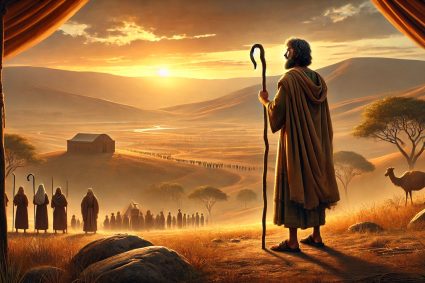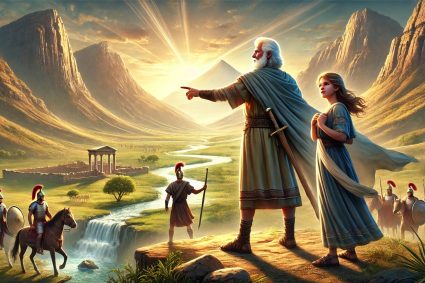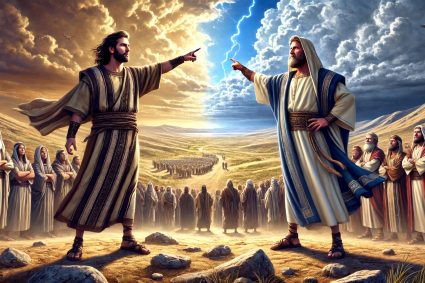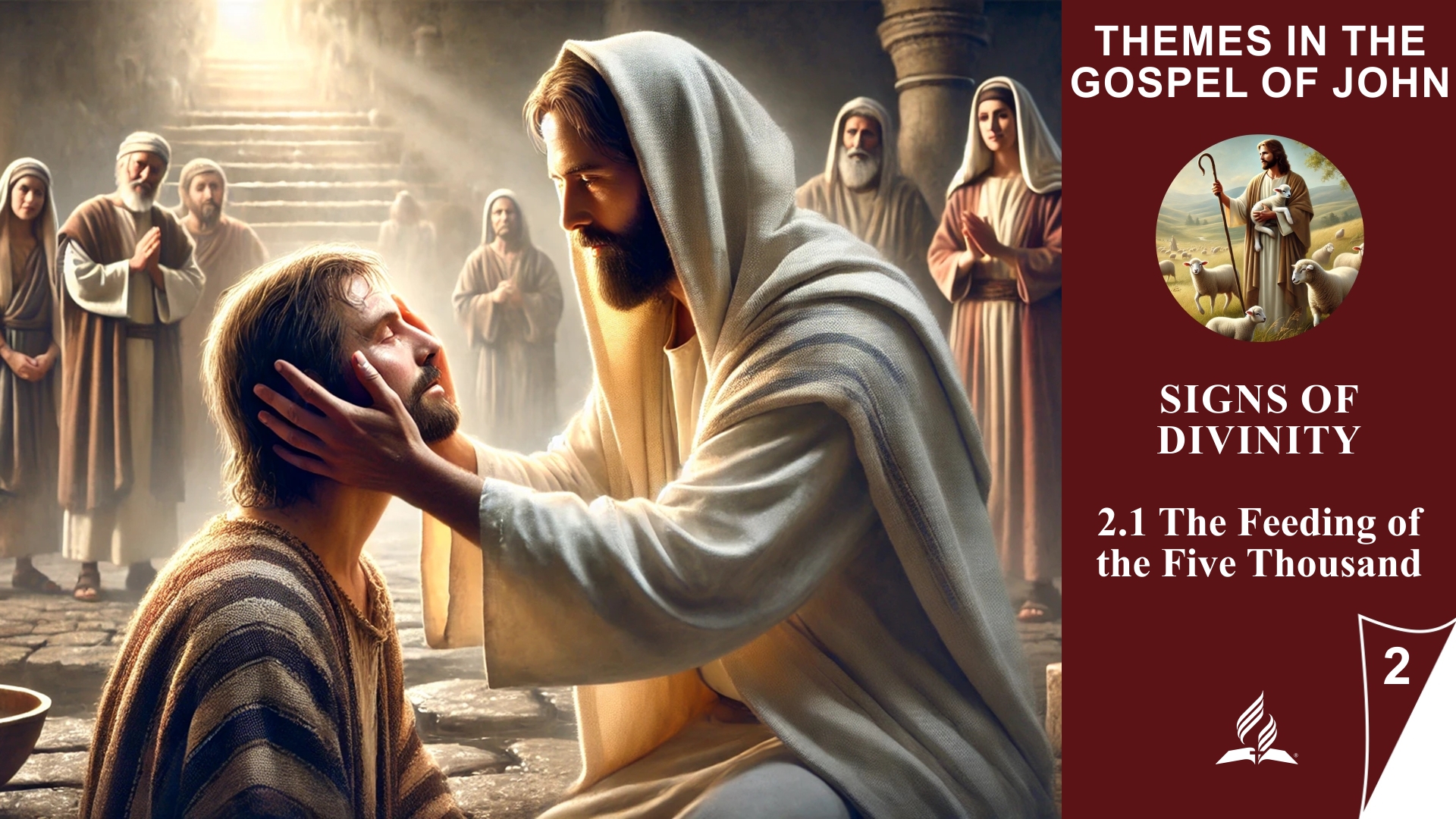

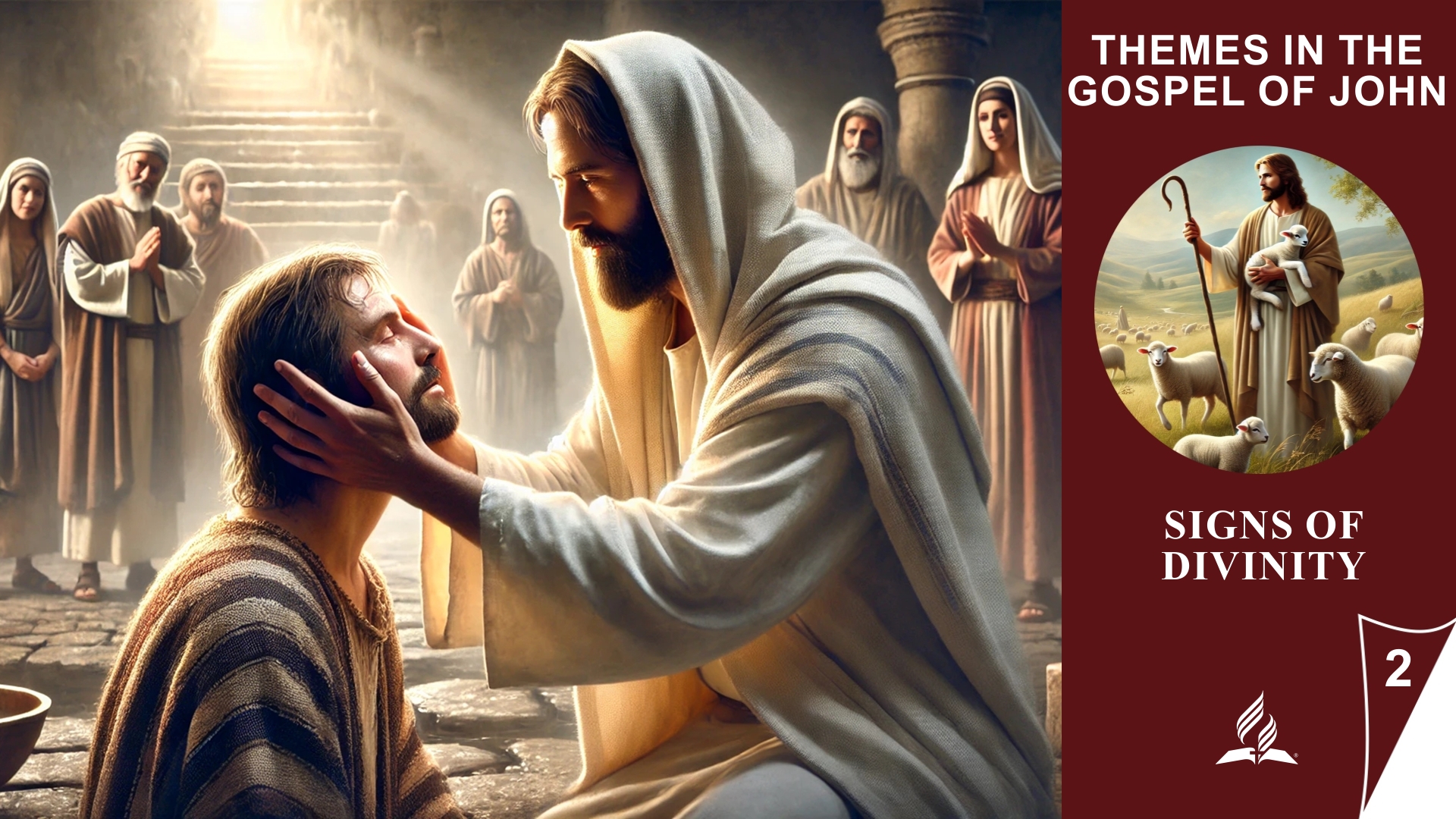
Lesson 2.Signs of Divinity
The Revelation of Jesus’ Divinity through His Miracles
Lesson 2 focuses on the revelation of Jesus’ divinity through His miracles and signs, as described in the Gospel of John. These miracles are more than just supernatural events—they are messages conveying deeper spiritual truths. Every sign that Jesus performs demonstrates that He is more than a prophet or teacher: He is the Son of God, possessing power over nature, illness, blindness, and even death itself.
The signs in this lesson call us to view Jesus not merely as a miracle worker but as the one who has come to bring spiritual life and to redeem humanity. In each miracle, a piece of His divine nature and His mission to deepen people’s faith is revealed. As Jesus feeds the crowds, heals the blind, and raises the dead, it becomes clear: He is the “Bread of Life,” the “Light of the World,” and the “Resurrection and the Life.” This lesson invites us to look beyond the signs and recognize in faith who Jesus truly is.
2.1 The Feeding of the Five Thousand
The Revelation of Jesus’ Divinity through the Feeding of the Five Thousand
Read John 6:1–14. What parallels can be found here between Jesus and Moses? In other words, what did Jesus do here that was meant to remind people of the liberation their ancestors experienced through the ministry of Moses?
The Gospel of John highlights important parallels between Jesus and Moses. A central detail is the temporal proximity of the feeding to the Passover festival, which commemorates the liberation of Israel from Egypt. John 6:4–5 emphasizes that Jesus wanted to remind people of the significance of Passover and the redemption through the sacrifice of the Passover lamb, which ultimately symbolizes His own sacrifice on the cross (cf. 1 Corinthians 5:7).
Through His actions in John 6:1–14, Jesus is portrayed as the “new Moses,” who not only provides physical sustenance in the form of bread but also points to His role as Savior and Redeemer. Just as Moses led the people out of bondage, Jesus comes to accomplish an even greater liberation: the redemption of humanity from sin.
Some key parallels between Jesus and Moses in this episode are:
-
Passover Time: The narrative takes place during Passover, reminding people of the liberation through Moses.
-
Mountain: Jesus ascends a mountain, similar to how Moses ascended Mount Sinai to receive the commandments from God.
-
Testing: Jesus tests Philip, much like the Israelites were tested in the wilderness.
-
Multiplication of Bread: The multiplication of bread echoes the manna provided to the Israelites in the wilderness.
-
Twelve Baskets: The collection of leftovers, especially twelve baskets full, symbolizes the twelve tribes of Israel and recalls God’s provision.
-
Prophet like Moses: The people recognize in Jesus the “Prophet” referenced in Deuteronomy 18:15.
Through these events, Jesus hints at His divinity. He is not merely a prophet like Moses but the promised Messiah who has come to save the world.
Read Isaiah 53:4–6 and 1 Peter 2:24. What great truth do these passages teach about Jesus as the Lamb of God? How is His divinity connected to this truth, and why is this truth the most important truth we can ever know?
The Great Truth about Jesus as the Lamb of God
Both passages clearly state that Jesus, though Himself without sin, took upon Himself the suffering and punishment for humanity’s sins. Isaiah describes how He was “pierced” and “crushed for our iniquities,” a clear foreshadowing of His sacrificial death on the cross. 1 Peter builds on this by emphasizing that Jesus “bore our sins in His body on the tree,” so that we might die to sin and live for righteousness, and through His wounds, we are healed.
The central truth of these texts is the substitutionary atonement of Jesus: He took our guilt and punishment upon Himself, though He was sinless. He is the sacrificial lamb slain for us so that we might receive life through His death. This concept directly corresponds to the Passover lamb, which symbolically replaced the death of the firstborn and saved Israel from destruction.
Connection to His Divinity
Jesus’ divinity is crucial for understanding this truth. Only a divine being, free from sin and moral guilt, could offer the perfect sacrifice for humanity’s sins. As the God-man, fully divine and fully human, He could pay the price for the world’s sins and restore the bridge between God and humanity.
-
His divinity means His sacrifice has infinite value, applicable not just to one person but to all humanity.
-
His humanity means He could fully identify with us by enduring pain, suffering, and death.
Why is this the Most Important Truth?
This truth is the foundation of the Christian faith. It answers the fundamental question of how a just God can forgive sin without compromising His justice. The answer lies in Jesus’ sacrificial death. Through His death, the way to God is opened; through His wounds, we are spiritually and morally healed. Without this truth, there would be no forgiveness or hope for eternal life.
Indeed, this is the most important truth we can ever know because it offers the possibility of reconciliation with God. It reveals God’s love and grace in their deepest form and provides us with the redemption that we could never achieve on our own.

This great truth—that Jesus is the Lamb of God who carries the sins of the world—is profoundly relevant to our everyday lives and faith. Here are some aspects of how this biblical teaching shapes our daily life and faith:
-
Freedom from Guilt and Forgiveness Since Jesus has borne our sins and died in our place, we can live each day in the freedom granted by the forgiveness of sins. This means we do not have to live under the burden of past mistakes and sins. The assurance of forgiveness allows us to renew ourselves and live in peace, strengthening our relationship with God and others as we learn to practice grace and forgiveness towards others.
-
Hope and Healing The verses from Isaiah 53 and 1 Peter 2:24 show that healing comes through His wounds. This encompasses not only physical healing but, more importantly, the healing of our hearts, minds, and souls. In difficult times or when facing pain and suffering, we can trust that Jesus understands and bears both our physical and spiritual wounds. This truth brings us comfort and a living hope that we are not alone in life’s challenges.
-
A Life of Righteousness Through Jesus’ sacrifice, we are invited to die to sin and live in righteousness (1 Peter 2:24). This means our daily lives should be characterized by a pursuit of holiness and justice. We are no longer slaves to sin but can live a new life empowered by Jesus, grounded in God’s righteousness. This is reflected in our ethics, decisions, and how we treat others. Living in righteousness means keeping God’s commandments and reflecting His love in all aspects of our lives.
-
Trust in God’s Provision The Feeding of the Five Thousand demonstrates that Jesus cares not only for people’s spiritual needs but also for their physical needs. This powerful reminder assures us that we can trust God to provide for us in our daily lives, whether materially or in moments of emotional or spiritual need. Just as the bread was multiplied, God can bless and multiply our limited resources when we trust Him.
-
Part of the Plan of Redemption Understanding that Jesus is the “new Moses” who brings not only physical but also spiritual liberation means that we are part of a larger plan of redemption. Every believer has a role in God’s kingdom. Just as people in Jesus’ time witnessed His miracles and signs, we today can witness God’s work in our lives and the world. Our daily lives become a testimony of His redemption and grace.
-
Humility and Gratitude The fact that Jesus, the Son of God, was willing to sacrifice Himself should lead us to deep humility and gratitude. Each day, we can remember the great sacrifice He made for us, prompting us to serve Him with a grateful and obedient heart. Our gratitude towards God helps us live in love and humility towards others.
-
Expectation of His Return The parallels between Jesus and Moses in liberating the people and the promise of the coming prophet show that Jesus not only came to redeem humanity from sin but will also return to complete His work of redemption. This hope of Christ’s return should motivate us daily to stay vigilant and ready, living our lives in accordance with God’s will.
Conclusion:
The revelation of Jesus’ divinity through His actions, such as the Feeding of the Five Thousand and His sacrifice as the Lamb of God, holds deep significance for our faith and daily lives. It teaches us to live in freedom and forgiveness, practice righteousness, trust in God’s provision, and maintain hope for ultimate redemption. This is the most important truth because it forms the foundation of our relationship with God and our eternal salvation.
Give God what you have and trust that He can do more with it than you ever imagined.
(Visited 12 times, 1 visits today)




